What Is Printer Toner? – All You Need To Know
Posted by Rob Errera on 05/24/2023

When your printer rumbles to life and ejects a warm printout, more than one question crosses your mind...
- What is printer toner?
- How do toner cartridges work and what’s inside?
- What are the differences between ink and toner?
- Which one do I need?
Don’t worry...we’ve got answers in the article below!
What Is Printer Toner?
Laser printers use toner cartridges while inkjet printers use ink cartridges.
What's the difference?
Inkjet printer cartridges are filled with liquid ink. This ink is ejected through print heads onto the printed page. Ink can produce very vivid and crisp prints.
High-end inkjet printers that use more than the standard four CMYK (cyan, magenta, yellow, and black) cartridges produce prints with a wider array of colors.
On the other hand, laser printers do not rely on ink for printing. Instead, they employ toner cartridges.
➜ Learn more about the differences between ink and toner here: Toner vs Ink
What Is Toner Powder Made Of?
Toner is essentially made of finely ground plastic and other specially formulated ingredients. Other ingredients are added that assist in the printing process. Silica keeps the toner particles loose and free flowing inside the cartridge.
Charge control agents, like ground iron, chromium and zinc, help maintain the charge of the particles.
The Power Of Powdered Plastic
In the early days of toner manufacturing, slabs of plastic were broken up and ground into powder. But this resulted in particles that were uneven in size and didn’t stick to the paper properly. They also tended to clump up inside the toner hopper.
Today, toner manufacturers “grow” uniform-sized toner particles, which result in better printed images and more efficient toner use.
Toner Gets (Electrostatically) Charged Up
The toner inside of cartridges is a proprietary formula specific to your brand of printer. But there’s no great secret about the basic toner ingredients — it is essentially plastic dust.
When your laser printer receives a message from the computer, a twirling agitator inside the cartridge hopper begins to spin.
This gives the toner particles a positive static charge, which means they can be positioned as an image on the negatively charged drum roller.
Also, finely ground plastic melts at a very low temperature, which makes fusion with heat and a pressure roller possible.

The photosensitive drum is located inside a toner cartridge.
What’s Inside My Toner Cartridge?
Manufacturers use the same basic formulas when making color toners. More on specific toner ingredients below:
Modern Color Toner Ingredients
Modern color toners contain 85 to 95 percent plastic, which is air milled into a superfine powder. The size of the toner particles plays a crucial role in determining the image quality of your prints. Smaller particles result in sharper printed images.
Colored toners consist of specific pigments for each individual color:
- Yellow Laser Toners: Pigment yellow 180, composed of benzimidazole.
- Magenta Laser Toners: Pigment red 122, composed of 2,9-dimethyl-quinacridone.
- Cyan Laser Toners: Pigment blue 15:3, composed of copper phthalocyanine.
Black Laser Toners have a different composition. They still contain carbon black, similar to early cartridge models, combined with powdered plastic. Carbon black, which is essentially soot, is produced by burning tar or creosote and is classified as a class II carcinogen. It is carbon black that gives car tires their black color.
In addition to these ingredients, both black and color toners contain fumed silica and charge control agents. Fumed silica increases the flow capacity of solids within the toner cartridge, preventing clumping and improving the printing process's speed.
Charge control agents, such as chromium, zinc, or iron, are added to maintain the charge of the plastic powder particles, which is essential for laser printing.
Other Toner Dust Components
The remaining components of both black laser toner and color laser toner are fumed silica and charge control agents.
Fumed silica increases the flow capacity of solids within the laser toner cartridge and reduces the risk of particles clumping together. Fumed silica also increases the laser toner’s speed in carrying out the laser printer printing process.
Charge control agents are added to the toner to maintain the charge of the plastic powder particles which is integral to laser printing. Charge control agents can include chromium, zinc, or iron.
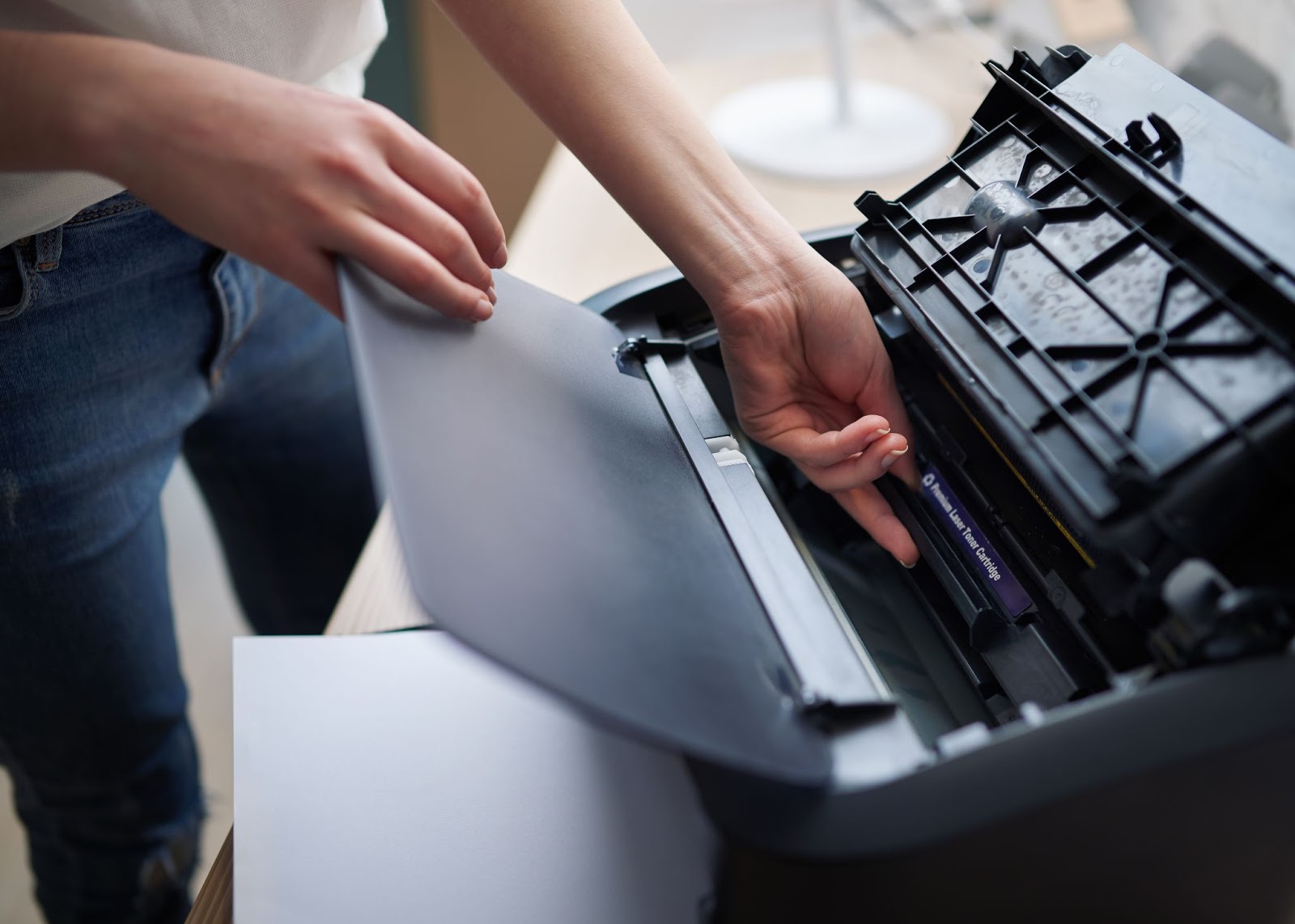
Replace that empty cartridge with genuine, OEM toner from Toner Buzz!
The Difference Between Laser and Inkjet Printers
The main difference between laser printers and inkjet printers is the method of printing.
Inkjet printers squirt ink onto paper to form an image or text.
Laser printers use an electrostatic charge to pull positively charged toner particles onto a negatively charged photostatic drum. The drum transfers the image to a piece of paper. Heated fuser units melt those particles onto the paper.
➜ Learn more about the differences between inkjet and laser printers here: Inkjet vs. Laser: What Is The Difference Between Inkjet and Laser Printers?
What's The Difference Between Toner Cartridges And Ink Cartridges?
Toner cartridges contain fine powder, in contrast to ink cartridges which contain liquid ink.
Ink cartridges are filled with printer ink. Printer ink is made of oil — linseed, soybean or a petroleum solution — mixed with colored pigments.
Types of Toner Cartridges
Consumers have a couple of options when it comes to buying replacement cartridges.
- OEM cartridges
- Compatible cartridges
- Remanufactured cartridges
But there’s really only one smart choice when it comes to laser printing. Stick with genuine OEM toner cartridges.
Genuine OEM Cartridges
Genuine OEM toner — commonly called brand-name toner — is made by the same company that made your laser printer. HP makes HP replacement cartridges, Brother makes Brother toner cartridges, Canon makes Canon cartridges, etc.
These toner cartridges deliver the best prints and have the most accurate page yields.
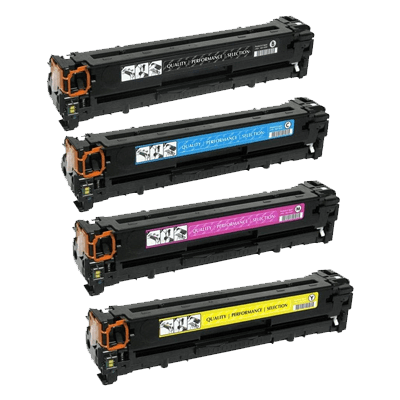
Black, cyan, magenta, and yellow toner cartidges.
Compatible Cartridges
What is a compatible cartridge?
It’s a toner cartridge made by someone other than the original equipment manufacturer.
They may look the same as brand-name cartridges but they’re not. The toner inside isn’t the same quality as the patented formulas used in OEM cartridges.
There’s very little quality control over third-party toner cartridge production. You never know what you’re getting when it comes to toner quality.
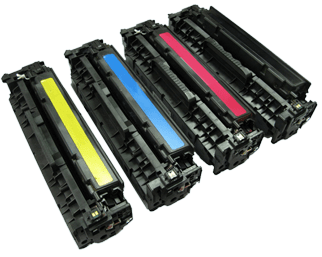
Stick with OEM toner cartridges for the best printing results!
Remanufactured Cartridges
Remanufactured toner cartridges are empty OEM cartridges that have been cleaned and refilled.
The quality of remanufactured cartridges can vary, with some performing well and others showing lower quality. Remanufactured toners are similar to compatible toners in that there is no uniform quality control in their production.
As a result, toner quality varies widely between remanufactured cartridges.
Page Yield & Printers
Brand name cartridges with a claimed page yield of 3,000 pages are designed to deliver the specified number of pages. OEM cartridges are generally reliable in meeting their stated page yield.
It's important to note that page yield can vary based on various factors, including the specific cartridge model and the type of printing being done.
While some genuine toners may have higher page yields, such as up to 20,000 pages in certain cases, it's essential to consider that page yield can vary across different cartridges and printing scenarios.
Compatible and remanufactured toners may also offer varying page yields depending on their quality and manufacturing process.
Your toner cartridges directly influence print quality. If you want your printer to deliver the best text and image quality, use the highest quality toner.
➜ Learn more about OEM vs. Compatible vs. Remanufactured cartridges here: Toner Cartridges — Genuine OEM vs. Compatible vs. Remanufactured
A Brief History Of Toner
Laser printing was first developed in 1969 by Xerox engineer Gary Starkweather. Starkweather modified one of the Xerox copiers to accept information sent from a computer and laser printing was born!
Print More, Faster and Cheaper
Early cartridges contained powder that was composed primarily of carbon black for black toner and iron oxide for color toner.
However, iron oxide tended to darkened images and produced poor color quality. Printer manufacturers knew there had to be a better way.
This ultimately led to the discovery of powdered plastic as a solution.
Currently, nearly each toner manufacturer uses “homegrown” powdered plastic for their color toner, with minimal differences in the ingredients from manufacturer-to-manufacturer.
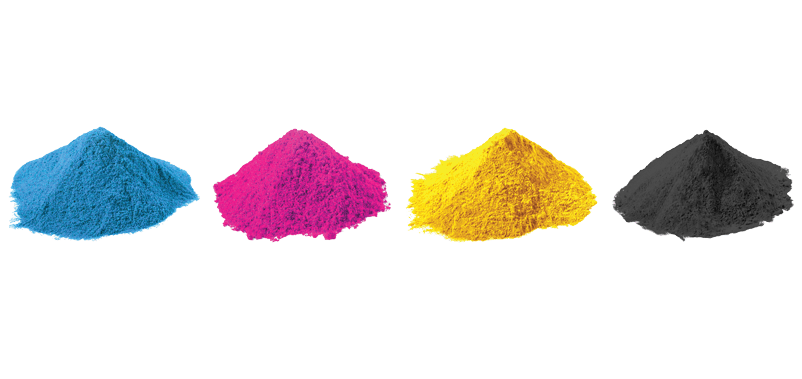
Finely powdered plastic to some, but magical toner dust to us!
Ink, Images, And Cookies... Yum!
Ever since early man used crushed berries to paint on cave walls, humanity has sought a better way to express itself through words and art.
We needed ink!
The rise of personal computers mirrors the rise of automated printers. The impact-based dot-matrix printer — which was more of a glorified typewriter — gave way to the inkjet printer.
The inkjet printer was a major advancement — offering the ability to eject ink through a print head onto a page.
An inkjet printer is great for printing certain high-end graphics and prints. But replacement ink is expensive and print heads tended to clog. Busy business offices longed for printers that could produce a high volume of quality text documents.
Laser printers changed the text document game forever!
A laser printer can crank out thousands of pages on a single toner cartridge!
Save money and reduce paper use...win/win!
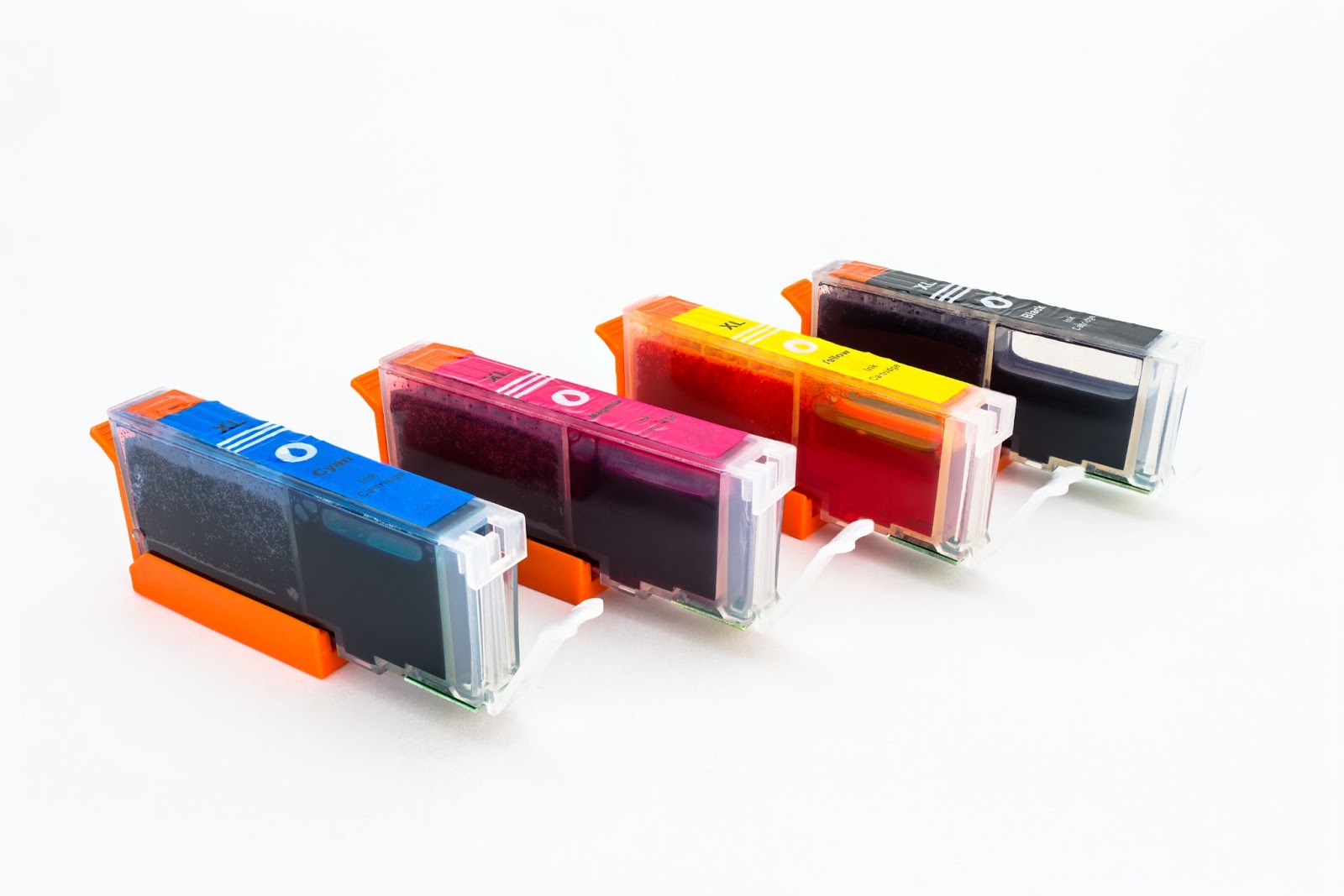
A quartet of cartridges for an inkjet printer.
Permission To Save With Toner Buzz!
Know what every printer owner needs?
The lowest prices on genuine OEM ink and toner!
Simply open your browser and surf over to Toner Buzz to access an endless spectrum of brand-name toner and inkjet cartridges.
For over a decade the printing industry has relied on Toner Buzz for quality content and the best deals on toner and ink... even hard-to-find pigment ink.
- Keep your color laser printers running smoothly!
- Print more but spend less!
- Find the most popular print supplies for rock-bottom prices!
Smart consumers shop Toner Buzz to save the most on print supplies!





